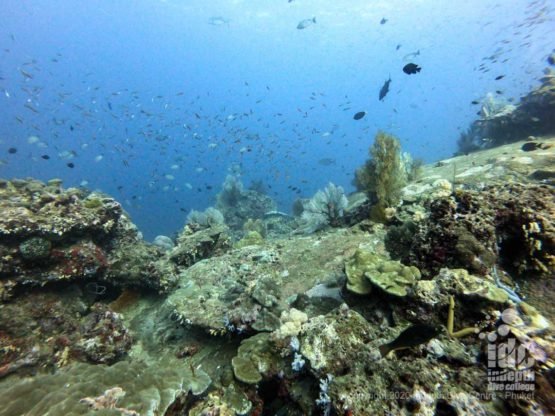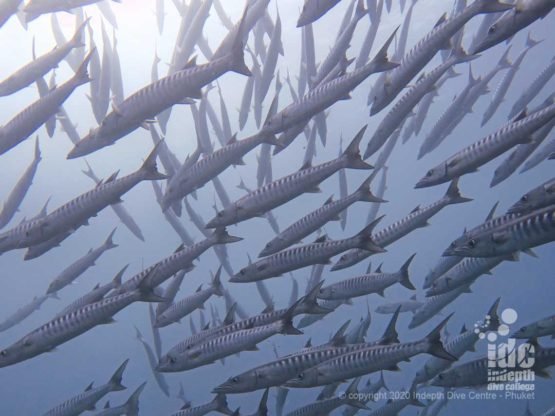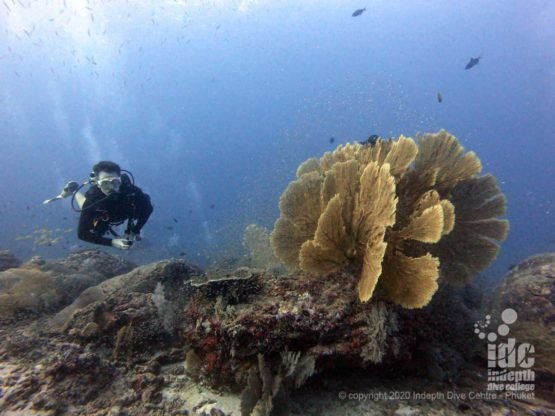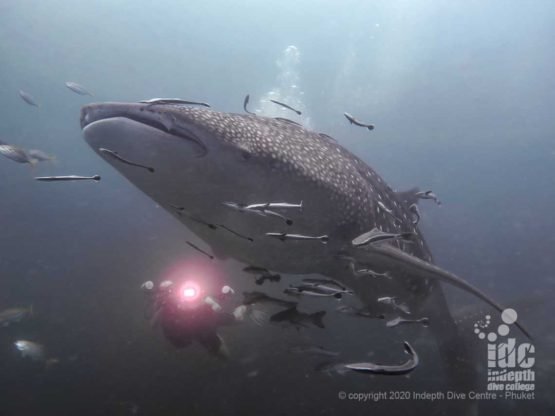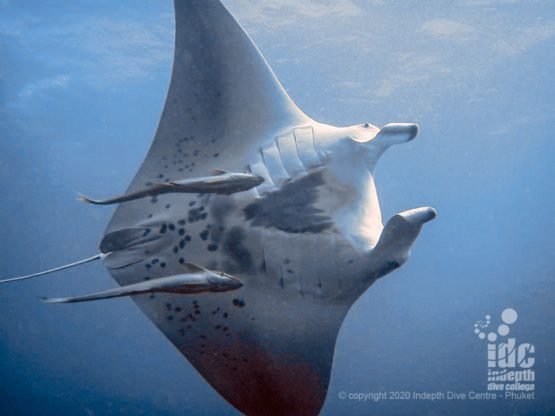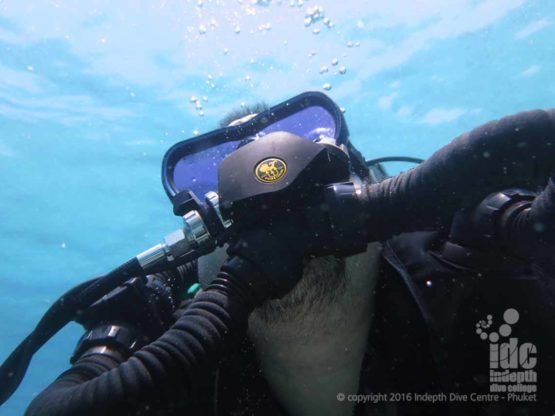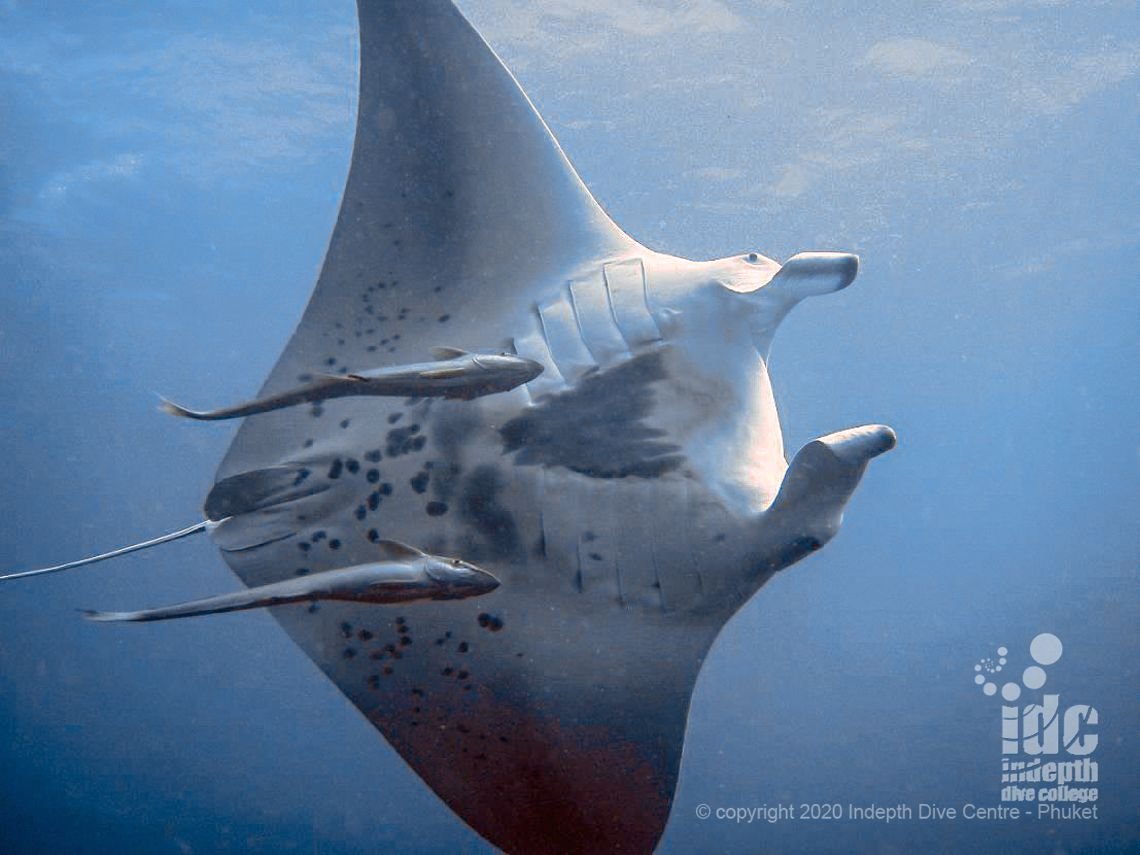
Ko Tachai Pinnacle: Manta time!
Ko Tachai is the Northern most Island in the Similan National Park and is stunning both above and below the surface. Consequently, Ko Tachai Pinnacle is a firm favorite among both diving guests as well as all the staff here at Indepth!
The main scuba diving dive site here, known simply as “Ko Tachai Pinnacle” and is one of the most colourful and diverse dive sites in the Similan or Surin Islands. Ko Tachai Pinnacle is also where we regularly dive with Manta Rays and Whale Sharks are not uncommon. This is in addition to the huge schools of barracuda and hundreds of trevallies cruising over the reef.
And although well known for the strong currents which often bring in big pelagic fish. If you are not used to diving in currents we recommend you dive Phuket first. You can easily join a Phuket Scuba Diving day Trip to get used to some current.
Ko Tachai Pinnacle is an absolute MUST for anyone diving the Similan and Surin Islands!
![]()
Ko Tachai Pinnacle: also known as ‘Twin Peaks’
Ko Tachai Pinnacle is also known as “Twin Peaks” since there actually 2 pinnacles here, starting at 13m below the surface.The dive starts with a free descent and you should listen carefully to the dive briefing.
There are two mooring lines: 1 goes down to 27m on the Eastern side of the dive site. The 2nd goes down to 17m on the Southern side. Most Similan / Surin Liveaboards will generally use the shallower of these moorings. And the captain will often drop you a little up current so when you do step into the water you can easily get to the mooring. But, do be ready to descend as if you are unprepared, it is easy to get swept off the dive site. Once you are on the line and making your way down, you can usually find shelter from the current behind the rocks.
At the bottom of the line, your dive guide will decide which direction will be best to navigate around the dive site. Moreover, near to the bottom of the line is a swim-through that takes you down to 20m. The top of the dive site is a flat plateau at around 13m depth with coral pinnacles across the top.
The Eastern side is a steep slope of boulders with some pretty coral gardens nestled behind the rocks. The South-Western side is a more gradual sloping boulder set up and generally seems to be the more preferred part of the dive site for the pelagic fish. We often see the big schools of Travelly and swirling vortex of barracuda out here. There is also a rock that rises to 21m which seems to be popular with the mantas.
The Barracuda Vortex
Ko Tachai Pinnacle is also popular with Rebreather Divers and Divers with good gas consumption. This is because current allowing, you can hang out in the current in the middle of a “Barracuda Vortex.” This is when you are in the middle of a swirling schooling Barracudas. Or when you are being danced around by a troupe of Manta Rays!
Similarly, out on this Southern plateau, there are several swim-throughs. Here fusiliers, Silversides and Sweetlips surround you. Furthermore, as you come around on the West side; there are many stunning coral pinnacles. Sea Fans cover these pinnacles and some huge groupers and Yellow Snappers that will envelop you as you move.
The Northernmost part is probably the prettiest part of the dive site. This is full of soft coral gardens with Whip Corals and several types of Moray Eel.
Keep your eyes open for the silent Mantas stealth-bombing over the top of you!
Ko Tachai Pinnacle: How to best finish the dive
As you start running lower on air, most dive guides will bring you back across the top of the pinnacle to the shallowest part. Be careful about going up the rope as it is a mooring line for boats and not actually a line for divers.
A much better, and safer, idea is to move to the shallowest boulder at the southern end of the site between the two moorings. This large rock rises to only 10m from the surface and gives you plenty of protection from any current. When the entire dive group is ready to go up you can then leave this rock and make your way up to a drifting safety stop. And of course, under a surface marker buoy so your captain knows where you’re coming up!
Have fun with the Mantas … We do ...




